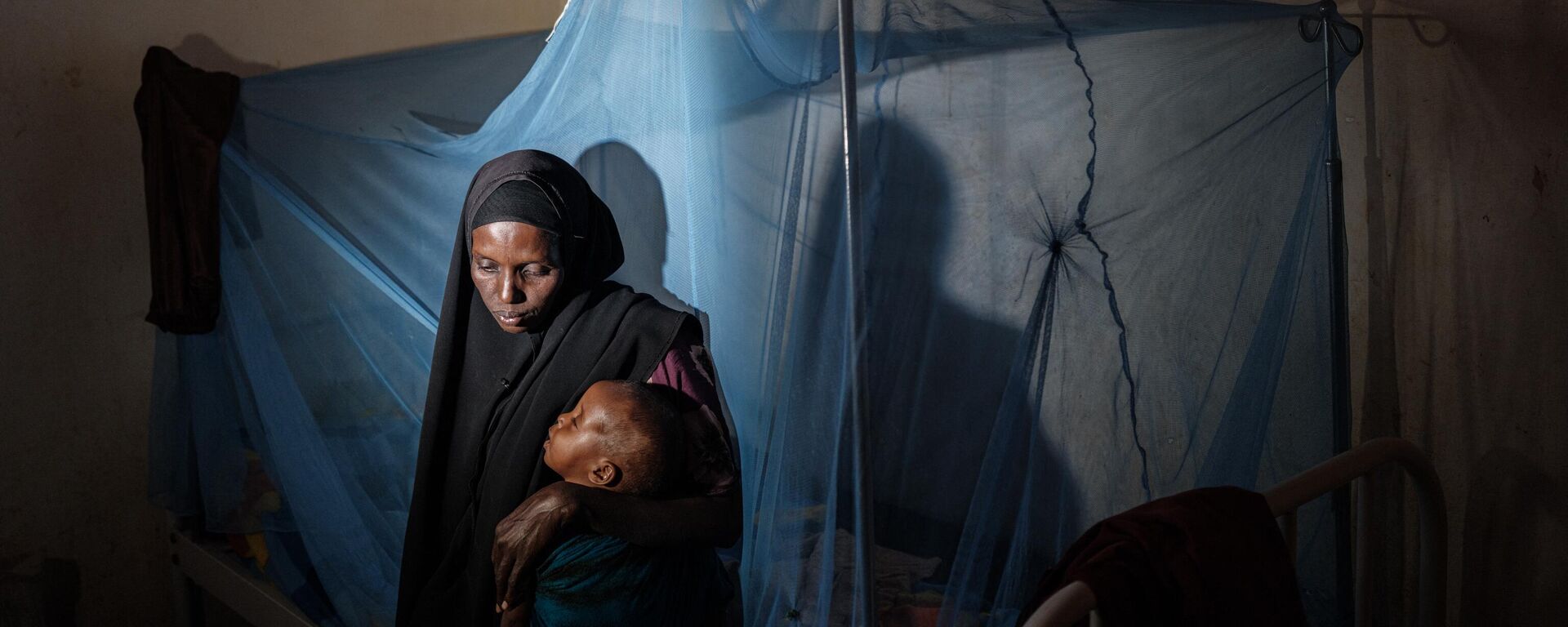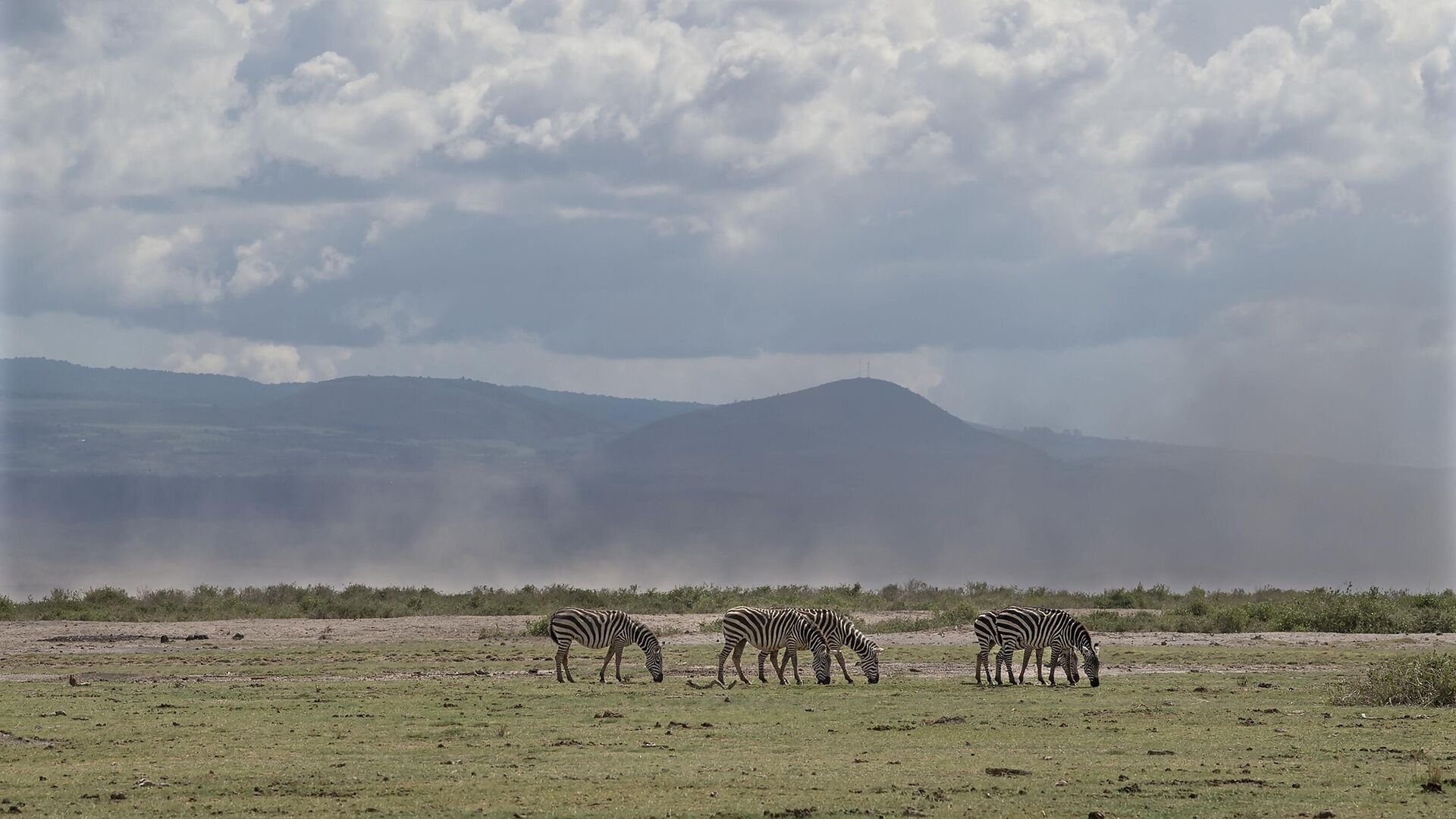https://sputnikglobe.com/20230226/another-failed-rainy-season-severe-drought-expected-in-east-africa-in-2023-igad-says-1107817255.html
Another Failed Rainy Season, Severe Drought Expected in East Africa in 2023, IGAD Says
Another Failed Rainy Season, Severe Drought Expected in East Africa in 2023, IGAD Says
Sputnik International
The ongoing drought is predicted to worsen in the next months which would result in another unfavorable rainy season for the economies of the broader Horn of Africa, the IGAD stated in a new report.
2023-02-26T10:39+0000
2023-02-26T10:39+0000
2023-02-26T10:39+0000
africa
east africa
ethiopia
horn of africa
igad
hunger
famine
climate change
kenya
somalia
https://cdn1.img.sputnikglobe.com/img/07e7/02/1a/1107817617_0:321:3070:2048_1920x0_80_0_0_6c6cdae5cd52c4d31c87c4ff90bf7734.jpg
The ongoing East African drought is expected to worsen over the next months resulting in another unfavorable rainy season for the economies of the broader Horn of Africa, the regional Intergovernmental Authority on Development (IGAD) has stated in a new report.According to the report presented at the Climate Outlook Forum (GHACOF 63), early projections also indicate that each economy will require at least 5% of its GDP to rebuild or protect inhabitants from the heat of the drought, indicating an urgent need to divert finances to the humanitarian situation. Rainfall in some areas of Uganda, Rwanda, Burundi, Tanzania, and South Sudan is also anticipated to be below average, as in Ethiopia, Kenya, and Somalia. The data in the report analyzed the projection for the typical peak rainy season of March, April, and May (MAM) 2023. It suggested that there will be low rainfall and high heat. This could be the sixth straight failed rainfall season in the most drought-stricken regions of Ethiopia, Kenya, Somalia, and Uganda in particular, according to the organization.The region has already lost at least 11 million animals, and the MAM harvests, which typically begin in August, are not guaranteed. Up to 60% of the Greater Horn of Africa's yearly rainfall is a result of MAM rainfall. Notwithstanding early warning information, IGAD Executive Secretary Workneh Gebeyehu raised concern over the delayed reaction in preventing or reducing the worst effects of harsh weather.However, the GHACOF 63 report states that wetter-than-usual conditions are anticipated over parts of central and southern Tanzania, north-western Kenya, and the border regions between Ethiopia and South Sudan. There is no preferred rainfall category in sections of central and western Kenya, north-eastern and southwestern Uganda, northern Burundi, central and northern Tanzania, and eastern South Sudan; forecasts indicate equal possibilities of below-average, normal, and above-normal precipitation.Moreover, the report indicated that across Djibouti, Eritrea, Sudan, northwestern South Sudan, southern, central, and north-eastern Ethiopia, northern Somalia, northern and western Kenya, and portions of south-eastern and western Tanzania, the likelihood of warmer-than-normal temperatures is most heightened. The National Meteorological and Hydrological Services of Igad Member States, the International Meteorological Organization, and other collaborators helped the ICPAC organize the GHACOF63 on February 22, 2023.Earlier in the month, Kenyan National Steering Committee on Drought Response's head Peter Ndegwa stated that the drought in the country may last another year.
https://sputnikglobe.com/20221224/over-20-million-children-in-the-horn-of-africa-affected-by-drought-un-says--1105753016.html
africa
east africa
ethiopia
horn of africa
kenya
somalia
Sputnik International
feedback@sputniknews.com
+74956456601
MIA „Rossiya Segodnya“
2023
News
en_EN
Sputnik International
feedback@sputniknews.com
+74956456601
MIA „Rossiya Segodnya“
Sputnik International
feedback@sputniknews.com
+74956456601
MIA „Rossiya Segodnya“
east african drought, east africa, intergovernmental authority on development (igad), dfamine in africa, hunger in africa
east african drought, east africa, intergovernmental authority on development (igad), dfamine in africa, hunger in africa
Another Failed Rainy Season, Severe Drought Expected in East Africa in 2023, IGAD Says
Kirill Kurevlev
Managing Editor
East Africa has been experiencing a series of severe droughts over the past several years. The UN asserts that despite being one of the regions in the world with the lowest contributions to greenhouse gas emissions, Africa is still set to be the most impacted by the effects of climate change.
The ongoing East African drought is expected to worsen over the next months resulting in another unfavorable rainy season for the economies of the broader Horn of Africa, the regional Intergovernmental Authority on Development (IGAD) has stated in a new report.
According to the report presented at the
Climate Outlook Forum (GHACOF 63), early projections also indicate that each economy will require at least 5% of its GDP to rebuild or protect inhabitants from the heat of the drought, indicating an urgent need to divert finances to the humanitarian situation.
Rainfall in some areas of Uganda, Rwanda, Burundi, Tanzania, and South Sudan is also anticipated to be below average, as in Ethiopia, Kenya, and Somalia. The data in the report analyzed the projection for the typical peak rainy season of March, April, and May (MAM) 2023. It suggested that there will be low rainfall and high heat.
This could be the sixth straight failed rainfall season in the most drought-stricken regions of Ethiopia, Kenya, Somalia, and Uganda in particular, according to the organization.
The region has already lost at least 11 million animals, and the
MAM harvests, which typically begin in August, are not guaranteed. Up to 60% of the Greater Horn of Africa's yearly rainfall is a result of MAM rainfall. Notwithstanding early warning information, IGAD Executive Secretary Workneh Gebeyehu raised concern over the delayed reaction in
preventing or reducing the worst effects of harsh weather.
“There is an urgent need to invest in early action and building community resilience,” he said.

24 December 2022, 11:06 GMT
However, the GHACOF 63 report states that wetter-than-usual conditions are anticipated over parts of central and southern Tanzania, north-western Kenya, and the border regions between Ethiopia and South Sudan.
There is no preferred rainfall category in sections of central and western Kenya, north-eastern and southwestern Uganda, northern Burundi, central and northern Tanzania, and eastern South Sudan; forecasts indicate equal possibilities of below-average, normal, and above-normal precipitation.
Moreover, the report indicated that across Djibouti, Eritrea, Sudan, northwestern South Sudan, southern, central, and north-eastern Ethiopia, northern Somalia, northern and western Kenya, and portions of south-eastern and western Tanzania, the likelihood of warmer-than-normal temperatures is most heightened.
The National Meteorological and Hydrological Services of Igad Member States, the International Meteorological Organization, and other collaborators helped the ICPAC organize the GHACOF63 on February 22, 2023.
Earlier in the month, Kenyan National Steering Committee on Drought Response's head Peter Ndegwa stated that the drought in the country
may last another year.


